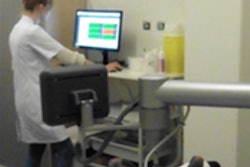Dear AuntMinnieEurope Member,
The mere mention of extending the role of radiographers often generates keen interest and high emotion in Europe, particularly among radiologists, but what lessons can we learn from the situation in Australia?
Sheila Moran has studied the topic closely, and we've interviewed her about her latest research. Go to our Women's Imaging Community, or click here.
A new study from Germany suggests that children from deprived areas undergo more CT examinations than those in affluent regions, and this is likely to have a strong impact on the possibility of cancer caused by radiation exposure. Clinicians and radiologists must be more aware of this point, the researchers say. Find out more in our CT Community, or by clicking here.
The European Society of Radiology has recognized the urgent need to find out more about how exactly teleradiology is being used. The society has now published the results of two recent surveys, and they make fascinating reading. Visit our PACS Community, or click here.
Automated 3D breast ultrasound has become an indispensable adjunct to mammography for women with dense breasts, but image quality is highly operator-dependent, and even expert sonographers can produce images that are hampered by acoustic shadowing and other flaws. A German team has developed an algorithm to find nondiagnostic image segments on 3D ultrasound in time to fix them before the patient leaves the doctor's office. The technique may help cut the high recall rates that make breast ultrasound a chore. Learn more here.
Dutch researchers have also been analyzing recall rates in breast imaging. They found an increased recall rate during the transition from film-screen to full-field digital mammography, both for women recalled only once or recalled twice for the same lesion, and these increased recall rates persisted after the transition. Click here to get the full story.



















